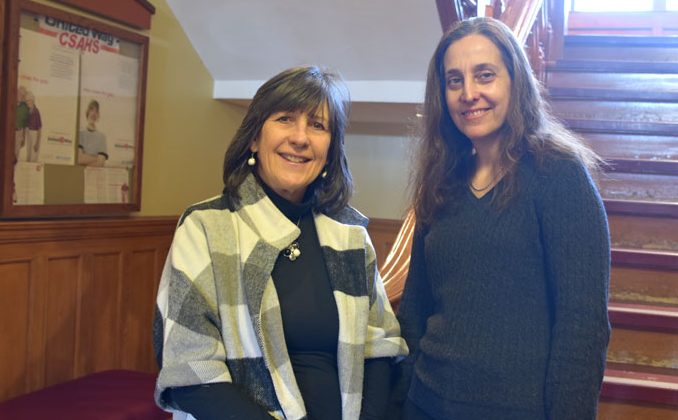GUELPH – Two University of Guelph professors hope to better understand how the housing crisis is impacting women experiencing and fleeing violence and how violence can lead to homelessness and vice versa.
Couched in today’s economic climate with food and housing affordability a growing concern and housing in short supply, it is important, practical and pragmatic to study the connections between violence in the home and homelessness, the researchers say.
The project, called the Safe and Stable Housing through Intentional Partnership, includes the voices and stories of women who have experienced violence and homelessness, as well as information from staff at women’s homeless and emergency shelters, and executive directors of those agencies, explained psychology professor Paula Barata in an interview in her office on campus.
Barata and sociology and anthropology professor Mavis Morton will work with Guelph-Wellington Women in Crisis, Women’s Interval Home of Sarnia-Lambton and Women’s Habitat in Etobicoke.
The project is funded through a partnership development grant from the Social Sciences and Humanities Research Council.
“We want to bring together organizations who work with violence against women and organizations that work on homelessness,” Barata explained.
“They often operate in silos in relation to housing.”
Morton said the project’s three main objectives are to:
- develop partnerships with domestic violence and homelessness organizations and foster partnerships among the organizations;
- collect longitudinal data on what becomes of women in shelters; and
- share any new learnings with these organizations to affect positive change.
These are early days of the three-year study, but Barata and Morton said the first step is to hire women with lived experience to tell their stories and collect other women’s stories.
These women will earn a pay cheque for their efforts and the information they provide will really inform the study, the researchers said.
“We have to let them tell their stories to understand their stories,” Morton said.
She’s interested in revisiting these women in years two and three of the study and beyond to learn what housing strategies worked for them or if they continue to live in unstable housing.
“How to get out of homelessness is all about the intricacies,” she continued.
“I’m looking forward to the longitudinal data. There’s very little data in Canada and what we have is not current.”
Many domestic violence agencies have emergency shelters for women fleeing violence and then offer transitional housing while they get on their feet. Women in these programs are often offered counselling, peer support and other wrap-around services.
With housing in short supply, transitional housing is often in short supply as well. And with domestic violence on the rise, emergency shelters are often full.
A woman fleeing violence might be put up in a motel, but she won’t receive the save wrap around services as a woman in a shelter.
And if there’s no room in a motel, she may be forced to live in a tent.
“And if her tent is stolen, then what?” Morton asked.
Or, and perhaps worse, if she has no place to go, she might wind up staying in the abusive relationship.
“Women make the rational decision to stay with a violent partner because at least they have a place to live,” Barata said, noting once housing is resolved, a person can focus on other issues.
“It’s a question we hate – why women don’t leave? But you really have to understand the context they are in,” Morton added.
Women fleeing violence get priority for housing, “but they could still wait a year,” Barata said.
And she would bump someone else on the waiting list for housing, perpetuating the waiting list.
Morton said a lot of this is not new information.
“We have known for decades the base causes of poverty – housing, pay inequity, public transit, childcare – they are all related. What we want to do is understand how it works together,” she said.
Emergency shelters now have to deal with that and mental illness among their clientele, making it daunting challenging work.
Barata and Morton hope the data they collect and the conclusions they draw at the end of the study will help homeless and domestic violence shelters to define best practices and inform public policy and government spending.




